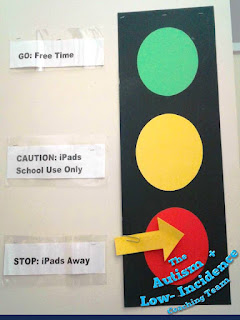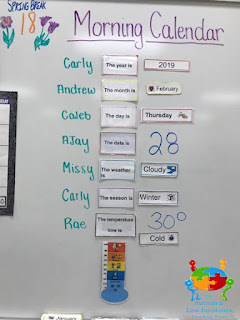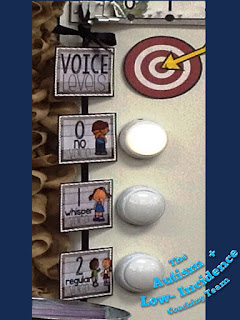Many of our students with executive functioning differences benefit from the use of visual supports to prime them throughout the school day. Most commonly, you may see visual schedules being used to prime students of the sequence of activities throughout the day. Social Narratives are another effective support often used for priming students of expected behaviors or social skills.
Priming is so incredibly effective that it is one of the most common recommendations we make so that students know exactly what is expected. Predictability is very calming and organizing particularly for students with autism.
Today's Executive Functioning Forum provides a variety of examples of ways we have seen visuals used in our districts to effectively prime students of various expectations.
Priming for Instructional Expectations
Letting students know exactly what work is expected during class can be a great way to provide motivation and cognitive clarity.
 |
| Weekly class agenda Scott Caudill Brookville High School, Brookville |
 |
| Explanation of writing expectations to ease student anxiety Jen Everett Springcreek Elementary, Piqua |
 |
| Daily assignment list Terri Weiss Kettering Middle School, Kettering |
Priming for Technology Use
Technology is increasingly more present in the lives of our students inside and outside of the classroom. Technology requirements and expectations may be different in class than students are used to. Use visuals to prime students on exactly what is expected to prevent unexpected behaviors and distractions.
 |
| Voice and phone expectations Thurgood Marshall High School, Dayton |
 |
| iPad use visual |
 |
| Permitted and not permitted website lists Bobbi Jo Chapman Snyder Park Elementary, Springfield |
Priming for Turn-Taking
Many of our referral students can become fixated or obsessive about turn-taking. They may race to the front of the line, get upset when others get to do their favorite classroom job, or struggle with taking their turn when appropriate. Use visual supports to make turn-taking more predictable and clearly communicate to the student what their responsibility is.
 |
| Calendar time jobs Sarah Janosik Tipp High School, Tipp |
 |
| Line leader visual Jamie Minnish Prass Elementary, Kettering |
 |
| Helper turn visual Jessica Burns Vandalia Preschool, Vandalia |
Priming for Voice Volume
Modulating voice volume can be another challenge for some of our students (and really all students at times!). Visual supports can be used in this area along with explicit instruction of what the visuals represent. During class times, refer to the voice volume visuals to prime students of what their volume should be when working independently or as part of a group. Or prime students before entering the hallway or during safety drills.
 |
| Colored voice volume scale Baker Middle School, Fairborn |
 |
| PAX voice volume with visual cues Taylor Ruef Stevenson Elementary, Mad River |
 |
| Voice volume push light cues Kelsey Keen Tri-Village Elementary, Tri-Village |
 |
| Voice volume scale Jackie Vollmer Driscoll Elementary, Centerville |
Priming for Changes
Change is hard! Especially for individuals with autism who strive with predictability and may have a fear of the unknown events that may occur when a change happens. Ease anxiety through using visual supports to provide a predictable way to prime for unpredictable changes. Pair the visual with an explanation of what to expect as a result of the change.
 |
| Change visual Jennifer Schmidt Beavercreek High School, Beavercreek |
 |
| Change card Jessica Stewart Trotwood ELC, Trotwood |
 |
| Post-it note change reminder on schedule Angela Crum Parkwood Elementary, Beavercreek |
 |
| Fire drill board visual Shanon Vance Valley Forge Elementary, Huber Heights |
Once you increase the amount of priming for expectations you use in your classroom, we think you will be surprised how it not only benefits your students with executive functioning differences but your class as a whole!


No comments:
Post a Comment